SAEDNEWS: Badab-e Surt is a rare natural wonder in northern Iran, known for its vibrant terraced mineral springs formed over thousands of years. Its surreal colors and unique geological formations make it one of the most visually stunning landscapes in the world.
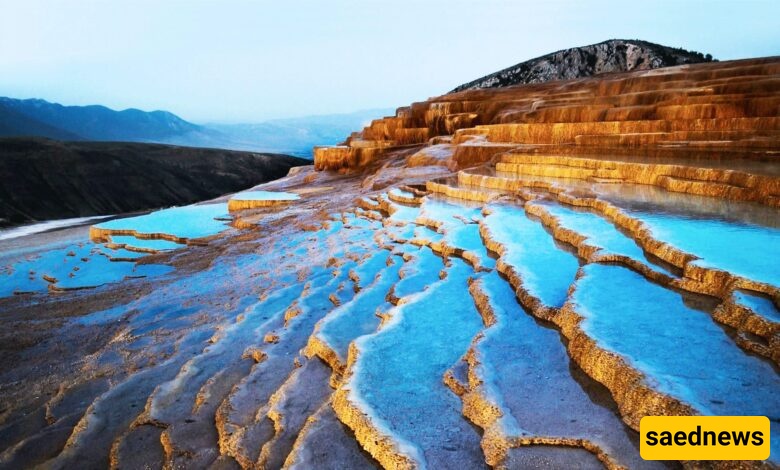
The beautiful Badab-e Surt springs, also known as the Colored Springs, attract numerous tourists as one of the top attractions in Sari. This stunning collection of springs, recognized as Iran’s second natural national monument after Mount Damavand, is not only uniquely beautiful but also highly valued for its therapeutic properties. Such formations are found in only a few locations across the globe.
Badab-e Surt Springs in Iran are truly astonishing natural travertine pools and are considered among the top tourist attractions in Mazandaran Province. Located at an altitude of 1,841 meters above sea level, the area surrounding the springs is covered with wild barberry shrubs. Their unique and striking orange hue is the result of high concentrations of iron oxide-rich sediments. These springs consist of several basins with completely different waters in terms of color, smell, taste, and volume.
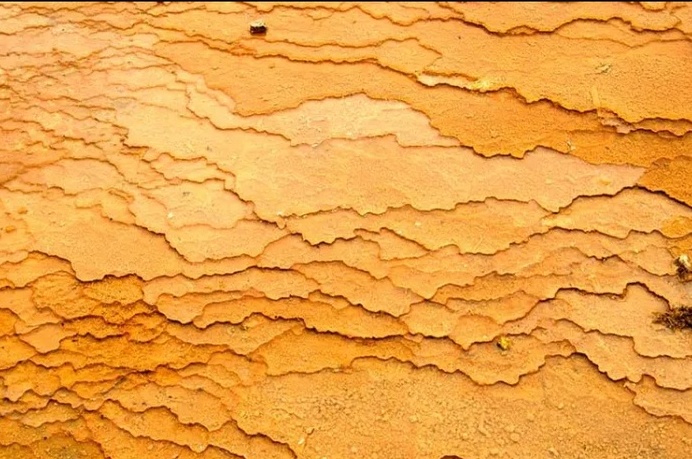
Springs similar to Badab-e Surt can be found in Pamukkale, Turkey. Additionally, the white and pink terraced formations in New Zealand, Baishuitai in China, Bagni San Filippo in Italy, the Yellowstone area in the United States, and Hierve el Agua in Mexico all resemble this natural wonder.
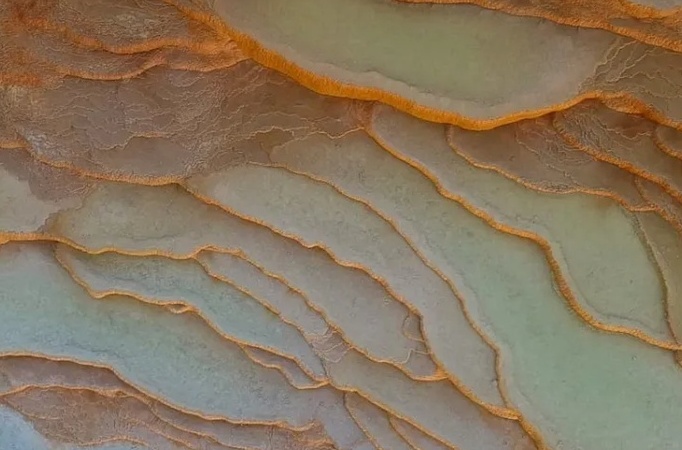
"Badab" means carbonated water, and "Surt" refers to intensity of effect. The Badab-e Surt springs were officially registered in 2008 as Iran’s second natural national monument. In that same year, Mount Damavand, the Badab-e Surt springs, and the ancient cypress tree of Abarkuh were registered as three natural heritage sites by the Iranian Cultural Heritage Organization.
Badab-e Surt is recognized as the second-largest saltwater spring in the world, following Pamukkale in Turkey. One of the key future plans for this site is its registration as a UNESCO Global Geopark and the establishment of a sisterhood partnership with the Pamukkale springs in Turkey.
Badab-e Surt springs are located in Mazandaran Province, in the southern part of Sari County, Chahardangeh District, within the Poshtkuh rural district, near Surt village, between the villages of Orost and Mal Khasht.
To the north, the springs are bordered by highlands and forest-covered hills with coniferous trees. The south overlooks lower valleys, while the eastern side is adjacent to elevations covered with shrubs and small bushes. The village of Orost surrounds the springs from the west.
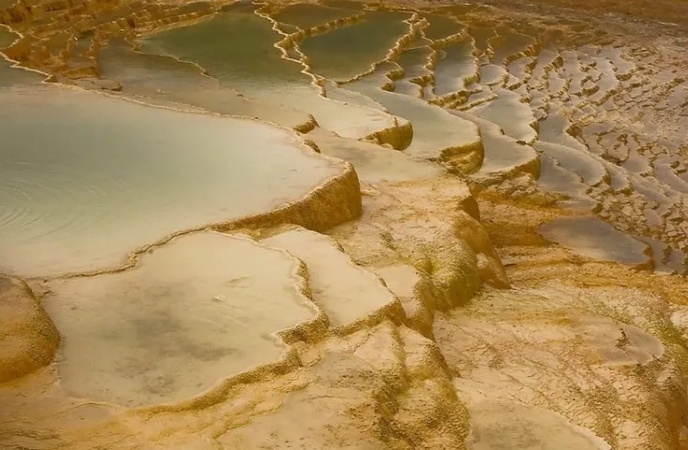
To reach Orost village from Tehran, you can use the following routes through either Semnan or Mazandaran provinces. The roads through Semnan province are shorter and safer, but the roads through Mazandaran are considerably more scenic:
Route 1: Tehran → Semnan → Mahdishahr → Shahmirzad → Foolad Mahalleh → Telmadareh Junction → Orost Village → Badab-e Surt Springs
Route 2: Tehran → Sari → Kiasar → Telmadareh Junction → Orost Village → Badab-e Surt Springs
From Semnan and Sari cities to Orost village, the roads are fully paved. However, the road from Orost village to the Badab-e Surt springs, which are located about one kilometer east of the village, is an unpaved dirt road.
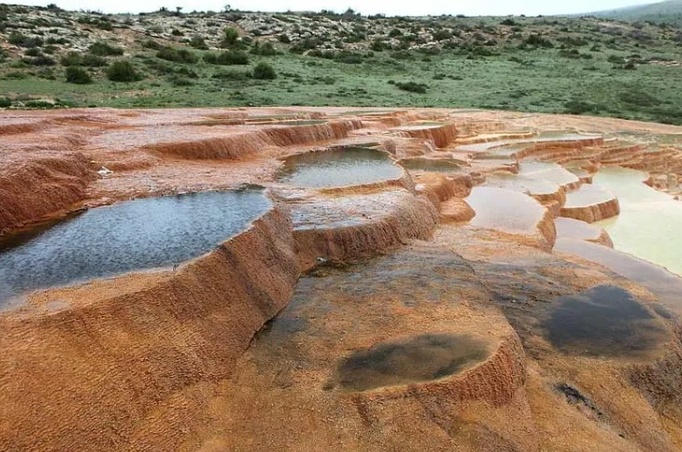
On both routes, after reaching Telmadareh, there is a gas station followed by a police checkpoint. The road directly opposite this checkpoint leads to Orost. Along this route, you will pass through the villages of Pashert, Kavat, and Qaleh Sar, and eventually arrive at a junction known as "Se-Khatt" (the three-way junction of Orost - Mal Khast - Badab Surt).
Many people take the wrong turn after reaching this junction. The left path (paved road) leads to the beautiful village of Orost after about two kilometers. The paved road on the right goes to the village of Mal Khast. However, the straight dirt road—which lies within the boundaries of Orost village—leads directly to the springs.
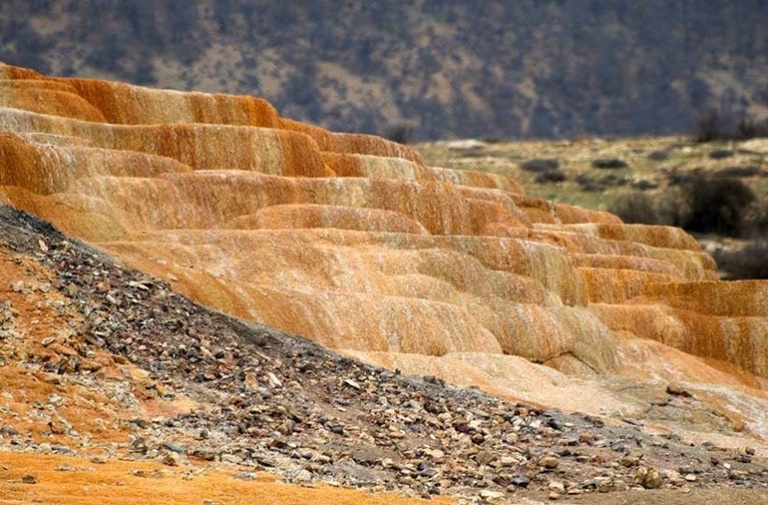
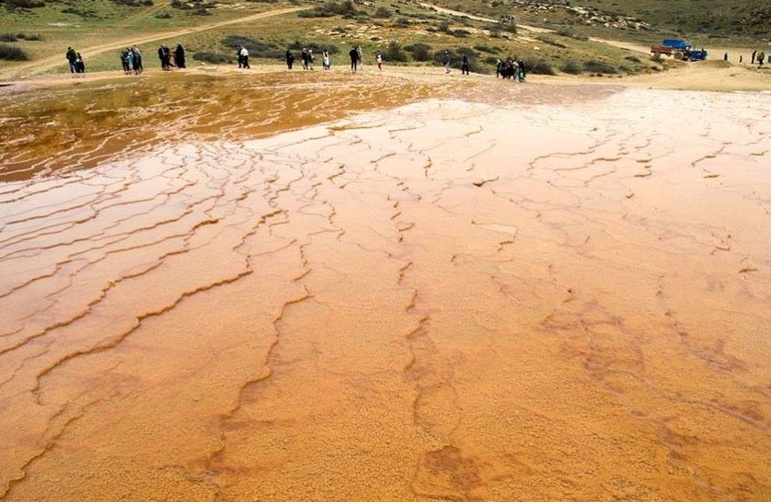
You need to travel approximately three kilometers along this dirt road. If you continue all the way, you might reach another village. After about three kilometers on this dirt path, there are two routes to reach the springs; both are also dirt roads located on the left side of the road and do not differ significantly in quality. One of them, which is farther away, is old, and the other is newer and private, belonging to an abandoned mine. You will first encounter this private road on your way. If you prefer not to take it, you can continue along the main path until you reach the old public road. Both routes lead to the top of a hill where the springs are located.
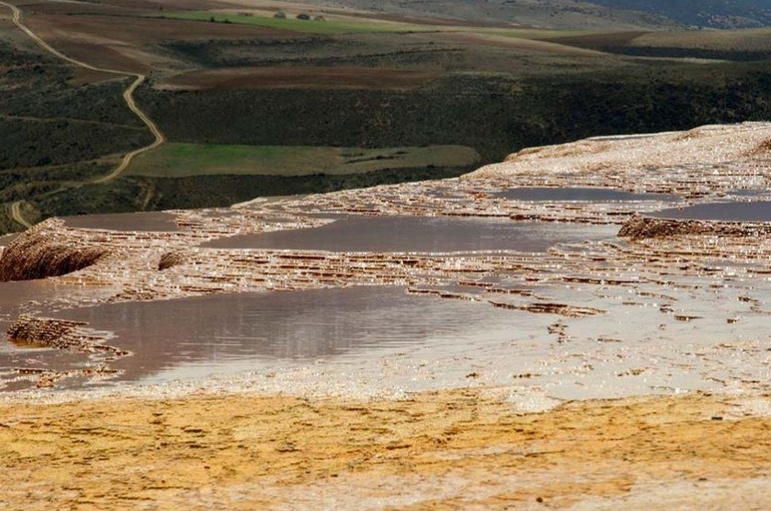
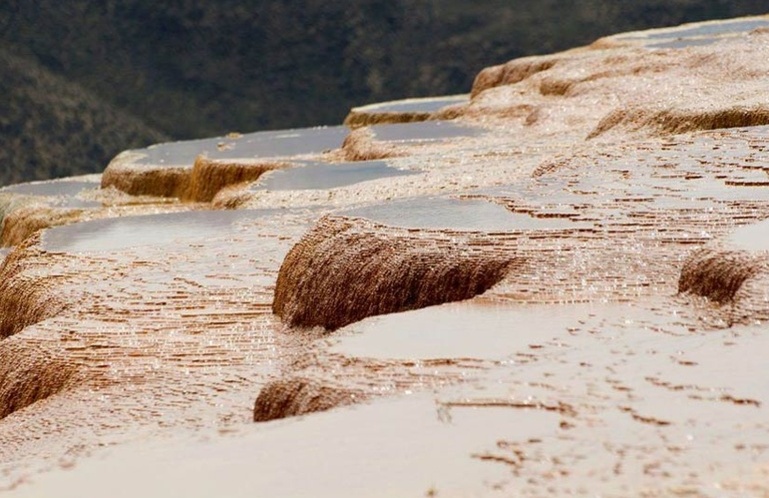
If you intend to take the private road, you should turn left onto the dirt road that branches off from the “Seh-Khat” (Three Lines) junction. Continuing along this path, you will reach an agricultural water reservoir. Next to this reservoir is a parking area and an uphill dirt road, which is the mine road. However, you will need to walk this road up to the springs unless you are driving a four-wheel-drive vehicle. Due to the presence of an abandoned stone mine, you should be cautious of possible rockfalls from the mountain above. However, no incidents of rockfalls have been reported so far. In case of negligence, the individual is solely responsible.
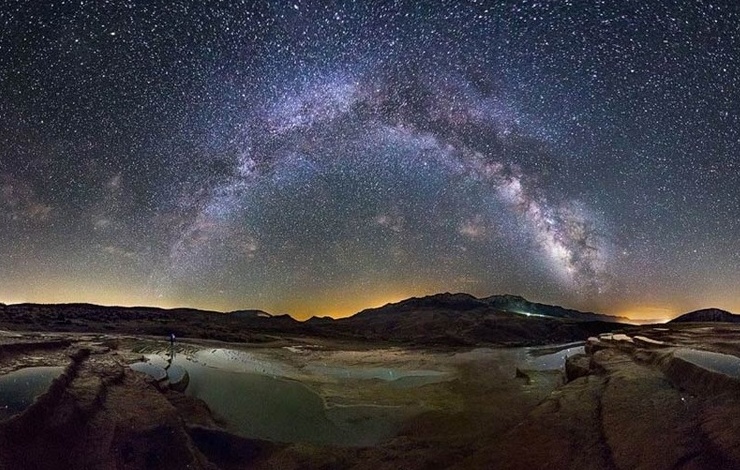
After traveling along this private uphill dirt road, you will reach a guard kiosk beyond which vehicle entry is prohibited. About 30 meters ahead of this kiosk, the springs are located.
The Badab Soort springs in Orost were formed simultaneously with the last folding of the Alborz Mountains during the Pleistocene and Pliocene epochs (Quaternary geological period). Over the years, the sedimentary and mineral waters of these springs have created hundreds of terraces and dozens of beautifully colored pools in orange, yellow, and red hues at varying sizes along the mountain’s lower slope. These terraces and pools constitute the main attraction and unique characteristic of the Badab Soort springs. The beauty of these terraces, combined with the springs’ special location on the mountainside and the surrounding scenic views—especially breathtaking at sunset—is truly remarkable.

The first abundant spring has very salty water and a pool approximately 15 meters in diameter and quite deep. It is beneficial for treating back and leg pain, skin diseases, rheumatism, and especially migraine headaches. Due to its high salt content, this spring does not freeze during the winter.
The second spring, located upstream and to the northwest of the first spring, has sour-tasting water colored red and orange. Some iron deposits have settled around this spring.
Facilities at Badab Soort Springs
Unfortunately, this site has very limited facilities. The restroom is located down the path in the parking area. According to many visitors, this restroom lacks soap and running water. Additionally, for any purchases, you need to buy your supplies in the villages along the way.
Best Time to Visit Badab Soort Springs
Visiting Badab Soort springs is possible in all seasons. In spring, besides the lush greenery and freshness of nature, the springs are at their fullest water level. During summer, the water flow decreases and the strong sun can be bothersome. In colder seasons, the springs take on a deeper red color, but you might encounter difficulties on the access path. Considering all these factors, the best time to visit Badab Soort springs is in Ordibehesht (late April to mid-May).

Visiting the springs and pools of Badab Soort in Ordibehesht (late April to mid-May) refreshes weary travelers, and the curious and truth-seeking eyes become fascinated and captivated while exploring the natural forest and mountainous landscapes stretching into the distance. The most enchanting scenes of the area occur at sunrise and sunset, when the sunlight shimmering on the pools and its reflections, combined with the light and shadow of the surrounding nature, create awe-inspiring displays of divine grace.
Those who plan to stay overnight in the area can set up camps around the village and in public places. There are also houses available for nightly rent in the village of Orost for tourists. Keep in mind that camping near the springs is prohibited. Also, when camping, be careful not to mistakenly pitch your tent on agricultural lands owned by the villagers. It is advisable to secure your accommodation arrangements before your visit.
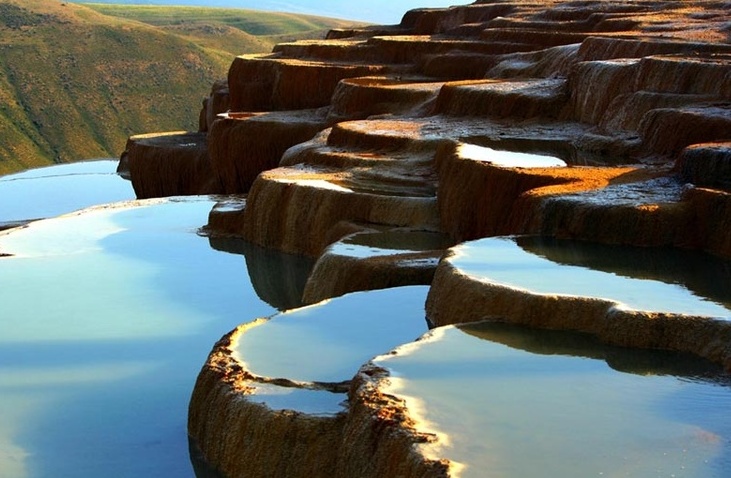
The visiting hours are from 6:30 AM to 8:30 PM. However, these hours vary throughout the year because, due to insufficient lighting, visiting during dark hours is not possible. Currently (2024), the ticket price for Badab Soort Springs is 23,000 Iranian Tomans. If you plan to use local villagers’ pickup trucks (Nissan trucks) to reach the springs, you should consider the additional cost. Also, parking fees must be paid separately.
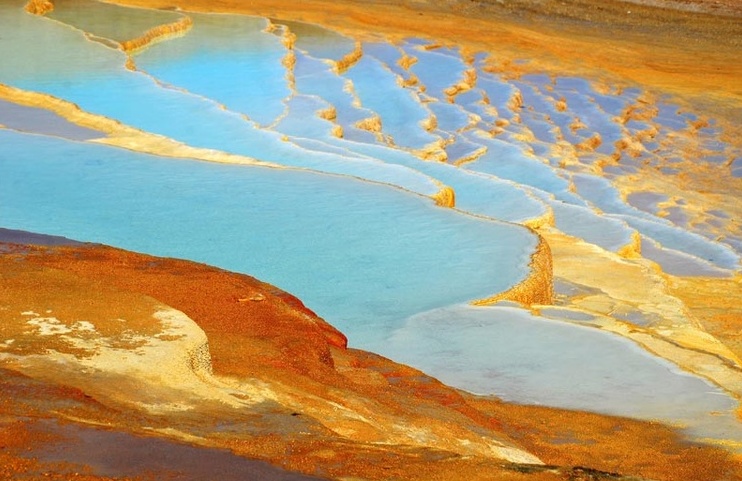
Be careful while visiting Badab Soort Springs and avoid walking or running on the steps.
Make sure to bring snacks and water with you.
Do not litter on the ground or in the springs. Trash bins have been provided for this purpose.
Pets are not allowed in the area.
Avoid lighting fires near the springs.

